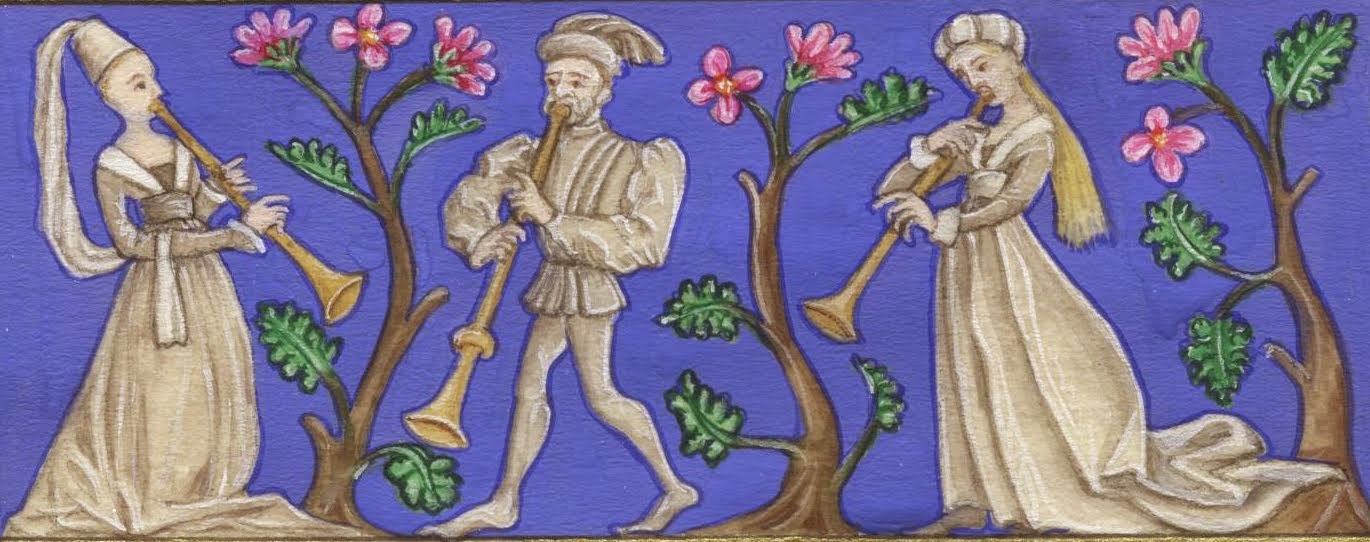I thought it might be interesting to look a little more into the use of drones in medieval music (that is, having a consistent sounding of the tonic or home note of the tune throughout the tune). It certainly seems to work well for a lot of tunes, and is a common feature of modal monophonic music in other cultures, but do we know if it was actually a feature of music in Europe in the middle ages?
For some instruments, a drone is more or less built in, with obvious examples being the hurdy-gurdy and bagpipe, although in fact early depictions of bagpipes do not always show a drone; and it is not always evident from descriptions and depictions of early hurdy-gurdies (synfonie or organistrum) that they necessarily included drone strings.
As mentioned in my last post, fiddles with flat bridges lend themselves readily to addition of a drone. Plucked strings such as early lutes etc. can be effectively played with one of the open strings used intermittently to create a drone effect. On the harp, the easiest way to add something with the other hand to a monophonic piece is to pluck a drone, but there is a strong temptation to make it 'movable' (i.e. to go to adjacent notes as the tune moves) which is not strictly a drone.
So far these are all single instruments producing drones to accompany themselves - would musicians playing together have sometimes done so with one simply playing a drone? I previously discussed the early 'wind band' which seemed to consist of two or more natural trumpets with a shawm - which would seem to point to something more or less drone-like (including the tonic, fifth and octave) in the accompaniment.
However, in terms of direct evidence of use of a drone as a standard way to enhance a monophonic tune, I haven't been able to find very much so far. In fact the only direct description I have found comes from a text on training singers, the Summa musice (which has been variously dated from the 12th to 14th century). This says that two part music (dyaphonia) includes 'baslicam' and 'organicam'; in 'dyaphonia basilica' one musician holds one note as basis, the other starts on fifth or octave and makes ascending and descending passages, joining with the bass at the cadences ("agreeing in his pauses with the one who holds the foundation for him").

No comments:
Post a Comment